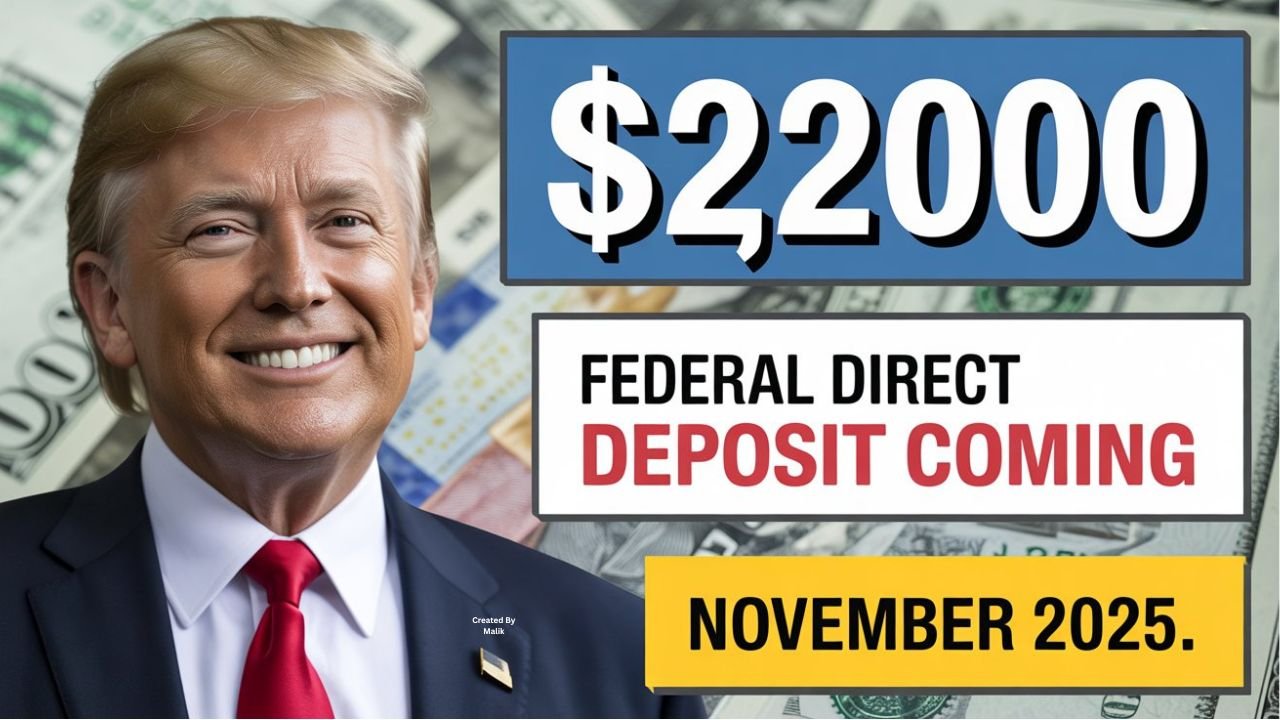A new federal relief payment of $2,200 has been announced for 2025, according to reports linked to the Internal Revenue Service (IRS) and the United States Department of the Treasury. This announcement arrives amid ongoing economic pressures for many American households, but it comes with tighter eligibility requirements than previous relief efforts.
Here’s everything you need to know about the payment, how to qualify, and what to watch out for.
What Is the $2,200 Payment?
-
The payment is presented as a one-time federal relief payment of up to $2,200 for eligible individuals in 2025.
-
Its purpose is described as helping offset rising cost-of-living pressures, including inflation, rent and utility increases, and general economic insecurity.
-
Unlike prior pandemic relief payments, this one reportedly features stricter eligibility rules and a more targeted rollout.
$1,130 Stimulus Checks 2025: Stimulus for Everyone? Eligibility & Payment Dates
Who Qualifies? Stricter Eligibility Standards
According to the guidance available so far, these are the main eligibility conditions:
-
Income thresholds
-
For full payment, your adjusted gross income (AGI) must fall under a specified limit (e.g., single filers under $75,000, heads of household under $112,500, married filing jointly under $150,000). Note: These numbers are provisional, pending final IRS rules.
-
-
Citizenship / residency status
-
U.S. citizens and legal residents with a valid Social Security Number are eligible. Undocumented residents are excluded.
-
-
Recent tax filings
-
Tax returns filed for 2023 or 2024 must be on file, so the IRS can verify eligibility. Those who have not filed may face delays.
-
-
Federal benefit recipients
-
Recipients of Social Security retirement, SSDI, SSI, VA benefits, or Railroad Retirement may automatically qualify, as long as their information is up to date in federal systems.
-
-
Dependents
-
Some households may receive additional payments for eligible dependents, although the final dependent payment amount is not yet finalized.
-
-
Banking / direct deposit info
-
Bank account data or mailing address must be current so the payment can be processed smoothly. Paper checks or prepaid cards may be used if direct deposit info is missing.
-
Payment Timeline & Delivery
-
The IRS plans to issue payments in phases to ensure accuracy and reduce processing errors:
-
First to benefit recipients and early-filers with direct deposit data on file.
-
Then to standard taxpayers whose information and filings meet all criteria.
-
Finally, to individuals who require additional verification (unfiled returns, missing direct deposit info, etc.).
-
-
Paper checks or debit cards will be mailed for those without direct deposit information, typically arriving later than direct deposit payments.
Key Differences from Previous Relief Payments
-
Unlike the broad-based stimulus payments issued during the pandemic, this $2,200 payment is more narrowly targeted (income caps, benefit-linked eligibility).
-
Approval appears to reflect new legislation or administrative direction rather than an emergency relief scenario.
-
The IRS has warned about scams and false information related to “automatic payments” or “new stimulus checks.” It emphasizes only verified information on IRS.gov should be trusted.
What You Should Do Now
-
Check your tax filings – Ensure your 2023/2024 tax return has been filed if required.
-
Update direct deposit and mailing address – If your bank account has changed, update it via the IRS portal or your online account.
-
Confirm benefit information – If you get federal benefits (SSA, VA, etc.), check that your file is current and you’ve provided any required updates.
-
Be alert to scams – The IRS will never email or text to request bank details or Social Security numbers for a payment. If you receive such communications, they’re likely fraudulent.
Bottom line
If the $2,200 federal payment proceeds as currently described, it could provide meaningful relief to millions—but only for those meeting stricter eligibility standards. Ensure your tax filings, benefit info, and banking details are current so you’re ready when the payment is released.
Frequently Asked Questions($2,200 Federal Payment 2025)
1. Will everyone receive the full $2,200?
No. The full amount is available only if you meet all eligibility criteria — income, residency, filed returns — otherwise the payment may be reduced or you may not qualify.
2. Do I need to apply to receive it?
In most cases, no special application is required beyond having qualifying tax and benefit filings. The IRS will process payments automatically for eligible individuals.
3. When will the payment arrive?
The release timeline is phased. If you already have direct deposit info on file and your returns are up to date, you may receive it early in the cycle. Paper checks will arrive later.
4. What if I didn’t file a tax return for 2023/2024?
If you were required to file and did not, you should file immediately to avoid a payment delay. For some benefit recipients, the IRS may still process the payment if the necessary info is on file.
5. Are there additional payments for children or dependents?
Yes — there is likely to be a supplementary amount for dependents, but the exact figure has not yet been finalized.
6. Could this payment be taxed?
Typically, relief payments of this nature are not subject to federal income tax. However, you should verify final IRS guidance once published.






